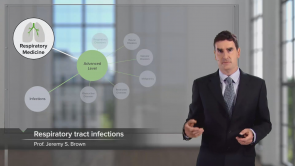Elasticity and Its Application

Über den Vortrag
Der Vortrag „Elasticity and Its Application“ von James DeNicco ist Bestandteil des Kurses „Principles of Microeconomics (EN)“. Der Vortrag ist dabei in folgende Kapitel unterteilt:
- A Closer Look at Elasticity
- Determinants of Demand Elasticity
- Computing Price Elasticity of Demand
- Variety of Demand Curves
- The Impact of Elasticity on Revenue
- The Income and Cross-Price Elasticity of Demand
- The Price Elasticity of Supply
- Recap
Quiz zum Vortrag
Which of the following statements is true?
- Luxuries tend to be more elastic than necessities.
- Broader markets tend to be less elastic.
- Goods with close substitutes tend to be less elastic.
- Goods tend to be less elastic over longer time horizons.
If the quantity demanded of a good falls by 20% when the prices rises by 10%, then the price elasticity of demand is _______________ and the demand curve is considered _______________.
- 2; elastic
- 2; inelastic
- ½; inelastic
- ½; elastic
Which of the following conclusions is correct?
- When demand is elastic, price and total revenue move in the opposite directions.
- When demand is inelastic, price and total revenue move in the opposite directions.
- When demand is elastic, price and total revenue move in the same direction.
- When demand is unit elastic, price and total revenue move in the opposite directions.
Suppose that an increase in the price of milk from $2.85 to $3.15 a gallon decrease the quantity purchased of Oreo cookies from 10,000 to 9,500. Using the midpoint method, the cross price elasticity is _______________ and these goods are _______________.
- -0.51; complements
- -0.51; substitutes
- -1.95; complements
- -1.95; substitutes
Kundenrezensionen
5,0 von 5 Sternen
| 5 Sterne |
|
5 |
| 4 Sterne |
|
0 |
| 3 Sterne |
|
0 |
| 2 Sterne |
|
0 |
| 1 Stern |
|
0 |




